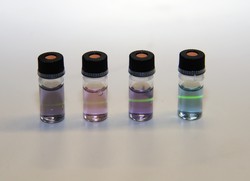Safety analysis for nanomaterials
Over the last 20 years the field of nanotechnology has grown rapidly thanks to advances in materials and techniques. As a result, nanoparticles and nanomaterials are increasingly present in the workplace, homes and the environment following the exploitation of their unique properties. Research, development and commercialisation in this field have outpaced the establishment of relevant characterising and testing protocols for assessing human safety or toxicity. Progress is being made, but it is still critical to train a new generation of scientists in nanotoxicology. The aim of the EU-funded project NANOTOES(opens in new window) (Nanotechnology: Training of experts in safety) was to support young scientists studying how nanomaterials interact with cells and tissues. Such knowledge has enabled them to develop reliable and accurate assays and provided valuable input leading to the formulation of an appropriate regulatory framework. Properties linked to toxicity that were identified in individual projects included particle size, shape, surface charge, attachment of specific chemicals on the surface and release of toxic metal ions. In several cases, toxicity was found to be due to unwanted contaminants, mainly bacterial compounds that act as pro-inflammatory stimuli in their own right, so the nanoparticles are only harmless carriers for them. Project partners also developed new methods and adapted existing ones to reflect the conditions of nanoparticle exposure. They included the release of silver ions, changes that nanoparticles undergo when they come into contact with blood compounds, and the production of highly reactive and thus toxic oxygen species induced by nanomaterials. They also addressed the induction of inflammation and both mutations and breakage of DNA, which may lead to cancer. Collaboration among 13 fellows working at 12 institutions created a network of peers in overlapping disciplines who explored nanomaterials safety from different perspectives. The fellows received scientific training in areas such as medicine, immunology, biochemistry, materials sciences and engineering. They were also schooled in legal and regulatory aspects, scientific communication and the practical application of results. The results of their work are showcased in peer-reviewed journals. NANOTOES provided expert training to a new generation of professionals, enabling them to meet the growing need for standardised testing of novel materials and to ensure public and environmental safety. The specific skills developed by the fellows will allow them to build careers in nanotechnology, nanomedicine and other related areas, and ensure that the EU is at the forefront of nanotechnology safety.







